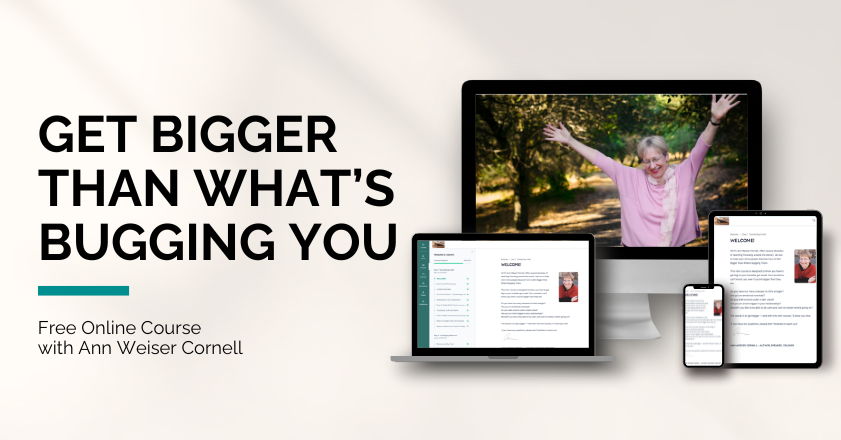“When using Focusing to facilitate studying math, what is the most fruitful approach?”
Jean-Marc writes: “My daughter has a hard time with mathematics. My assumption is that something blocks her and that Focusing could help. She knows how to do Focusing and sometimes it helps with math — and sometimes it doesn’t. I can help her do Focusing in different ways. I first invite her into awareness of her body, and then there are different possibilities:
“(1) Let her imagine she is passing a math exam and ask her how she feels
(2) Ask her what feeling comes about ‘the whole of math’
(3) Let her focus on one particular math exercise
(4) Invite the part of her that does not want to do math
(5) Invite the part of her that is strong in math
“My question: what is the most fruitful approach? Of course I can ask her to sense the most fitting starting place… but I was wondering if you have a recommendation, from a theoretical perspective.”
Dear Jean-Marc,
Isn’t it great that your daughter has you to help her with Focusing with her issues about doing math! And you’re right that her own sense of the right starting place is probably more important than anything I can say. But let me try to add my perspective.
Your question is very interesting to me, because it is about starting places, and it applies much more widely than simply to the issue of a block to doing math. This question, and my answer, actually applies to any area of difficulty, block, being stuck, sense of frustration… anything we want to do but we don’t do it.
In my work with my own writer’s block, I discovered that where I started — how I invited the issue at the start — was one of the keys to Focusing successfully on that issue.
What I’ve found is that in most cases, it’s most fruitful (I like that word “fruitful”) to start by inviting the “part that doesn’t want to.” That would be your choice #4. The Focuser needs to put up a “flag of truce” — be Self-in-Presence, and be purely a listener and not argue or try to persuade this “blocking” part. It’s always surprising what it’s reasons are, and what it has to say, and this alone can be quite transformative.
Then, if there has been a shift and more Focusing feels right, it can be good to move on to strengths, visualizing success and inviting the feelings of the wanted states, as in your #1 and #5.
If you go to the positives without first listening to the “negatives,” it can feel like you are trying to impose something. But if the “part that doesn’t want to” feels fully heard, it often opens into a wanting of those positive, successful states. So that order is rather important… except of course that there are exceptions. I’m describing a tendency rather than a fixed rule.
So in general, “not-wanting” first, and then “wanting” — unless of course it feels right to the Focuser to go another way.







I am very happy you answered my question. And I am even happier that you did not answer it by saying “all these options are equivalent” but by selecting specifically one of them.
I agree that this question applies much more widely than simply to the issue of a block to doing math. At the time I asked it, I was facing it as well during my own focusing. It is just that I found it easier to ask it in the specific context of maths as this context had clearer boundaries than the other contexts I could think about.
After asking you this question, I did focusing on it and I also tried different alternatives with my daughter. Something that seemed to work well was “Let’s invite what is blocking from doing maths”, what is close to #4.